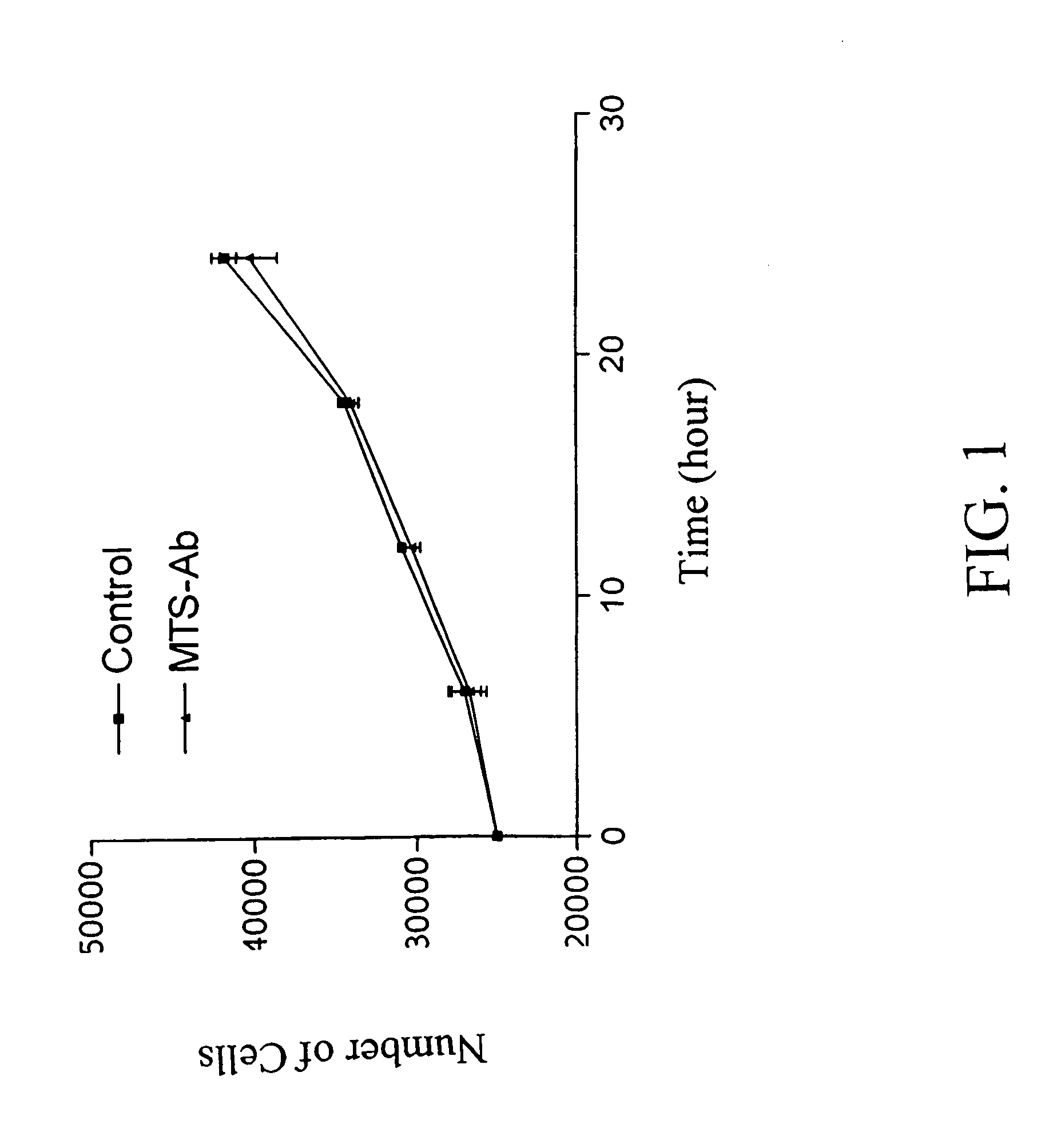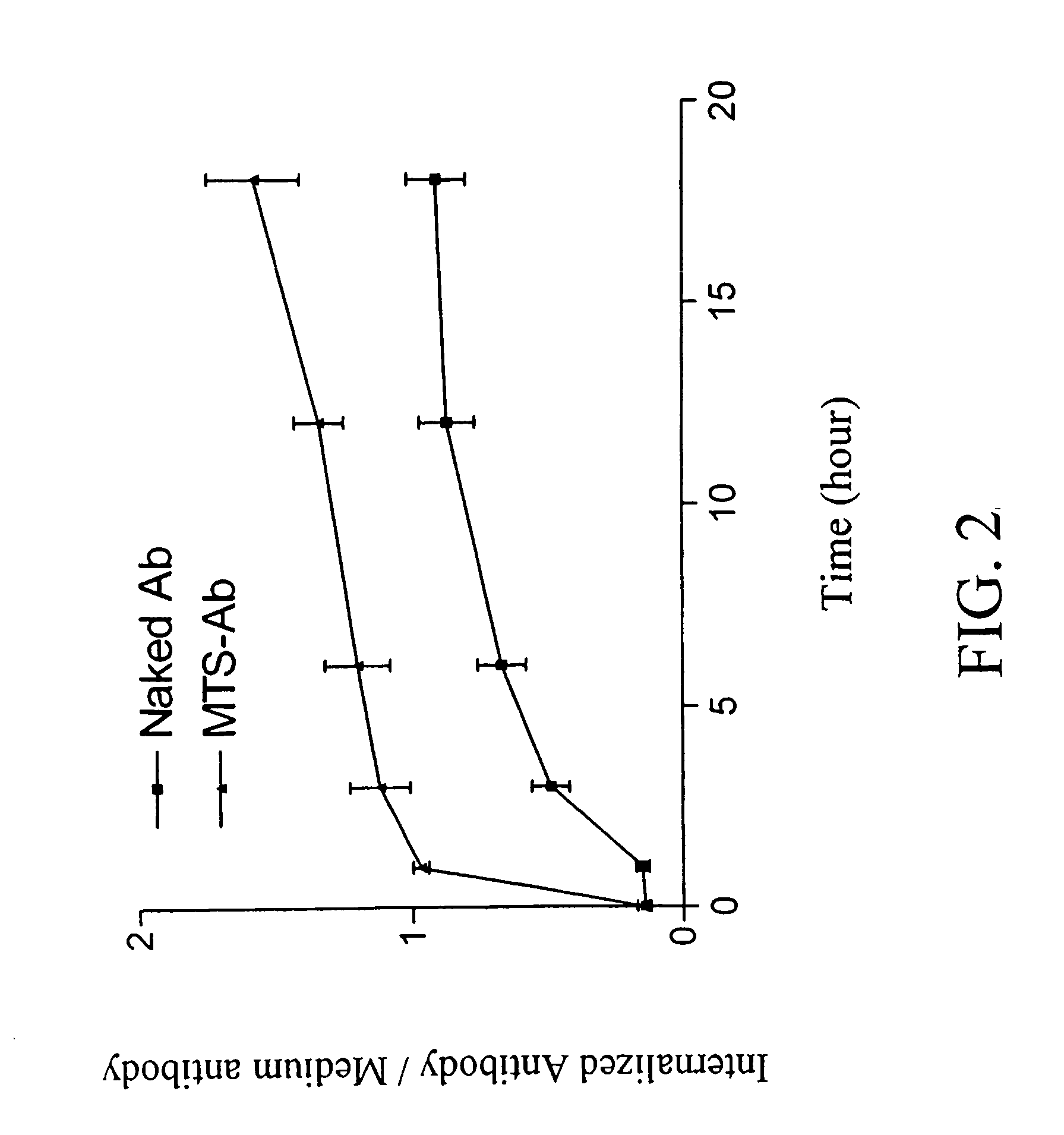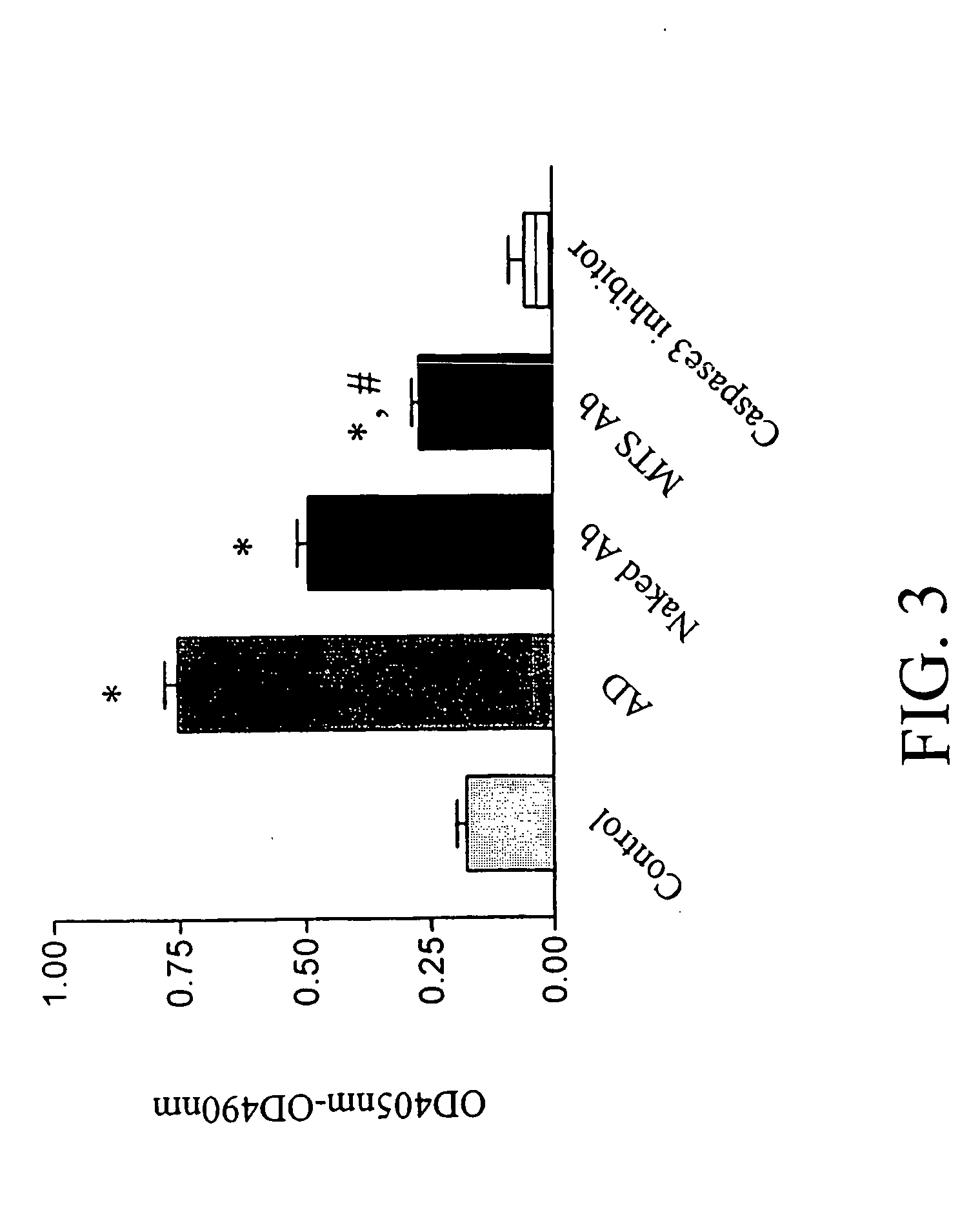Trans-membrane-antibody induced inhibition of apoptosis
a technology of transmembrane antibodies and apoptosis, which is applied in the field of fusion proteins, can solve the problems of antibody selectivity reduction, potential toxicities, and antibody promise never fully realized, and achieve the effects of inhibiting apoptosis, reducing chemically induced apoptosis, and inhibiting apoptosis
- Summary
- Abstract
- Description
- Claims
- Application Information
AI Technical Summary
Benefits of technology
Problems solved by technology
Method used
Image
Examples
example 1
Enhancement of an Anti-idiotype Vaccine
[0074] 3H1 is a murine anti-idiotype antibody (Bhattacharya-Chatterjee, et al., J Immunol., 145:2758-65, 1990) which mimics the carcino-embryonic antigen (CEA). 3H1 induces in animals anti-CEA antibodies when used as KLH-conjugated vaccine in complete Freund's adjuvant. 3H1 has also been tested in a clinical phase I study where it induces antibodies which bind to CEA in approximately half of treated cancer patients. However no clinical response was observed in this study (Foon, et al., J Clin. Invst., 96:334-342, 1995) due, in part, to low immunogenicity.
[0075] 3H1 mAb was affinity cross-linked with a 13-mer peptide (SEQ ID NO.:1) derived from the C3d region 1217-1232. The amino acid sequence was derived from of the Cd3 peptide and has the following sequence: KNRWEDPGKQLYNVEA (SEQ ID NO. 1)
[0076] BALB / c mice were immunized twice with 25 μg of C3d-3H1 in phosphate-saline solution intramuscular. 7 days after the last immunization mice were ble...
example 2
[0077] Furthermore, sera from mice immunized three times with either 3H1 (25 microgram in saline) or 3H1-C3d-peptide (affinity cross-linked, 25 microgram in saline) were also tested for Ab3 response. Mice were bled and sera were tested for binding to F(ab) of 3H1 in ELISA. Upon determining the binding of dilutions of mouse sera to 3H1 F(ab), it was found that while naked 3H1 does not induce Ab3 antibodies, 3H1-peptide does showing that the affinity-cross-linked 3H1 enhanced immunogenicity.
[0078] Other C3d peptides which may be used in the practice of the present invention include those reviewed in Lambris et al, “Phylogeny of the third component of complement, C3” in Erfi, A ed. New Aspects of Complement structure and function, Austin, R. D. Landes Co., 1994 p. 15-34, incorporated herein by reference in its entirety.
example 3
Enhancement of an Mouse Tumor Idiotype Vaccine (38C13)
[0079] 38C13 is the idiotype expressed by the 38C13 B-lymphoma tumor cell line. The Levy group has developed this idiotype tumor vaccine model and has shown that pre-immunization with KLH-conjugated 38C13 Id can protect against challenge with 38C13 tumor cells in mice (Kaminski, M. S., Kitamura, K., Maloney, D. G. and Levy, R., J Immunol., 138:1289, 1987). Levy and colleagues (Tao, M-H. and Levy, R., Nature, 362:755-758, 1993) have also reported on the induction of tumor protection using a fusion protein (CSF-38C13), generated from a chimeric gene and expressed in mammalian cell culture fermentation. 38C13 Id proteins were affinity cross-linked with a 16-mer azido-peptide derived from the C3D region 1217-1232.
[0080] Ten mice were immunized with 50 ug of C3d-38C13 conjugate in phosphate-saline solution intra-peritoneally three times. After the third vaccination mice were challenge with 38C13 tumor cells. Control groups included ...
PUM
| Property | Measurement | Unit |
|---|---|---|
| Therapeutic | aaaaa | aaaaa |
| Hydrophobicity | aaaaa | aaaaa |
| Toxicity | aaaaa | aaaaa |
Abstract
Description
Claims
Application Information
 Login to View More
Login to View More - R&D
- Intellectual Property
- Life Sciences
- Materials
- Tech Scout
- Unparalleled Data Quality
- Higher Quality Content
- 60% Fewer Hallucinations
Browse by: Latest US Patents, China's latest patents, Technical Efficacy Thesaurus, Application Domain, Technology Topic, Popular Technical Reports.
© 2025 PatSnap. All rights reserved.Legal|Privacy policy|Modern Slavery Act Transparency Statement|Sitemap|About US| Contact US: help@patsnap.com



